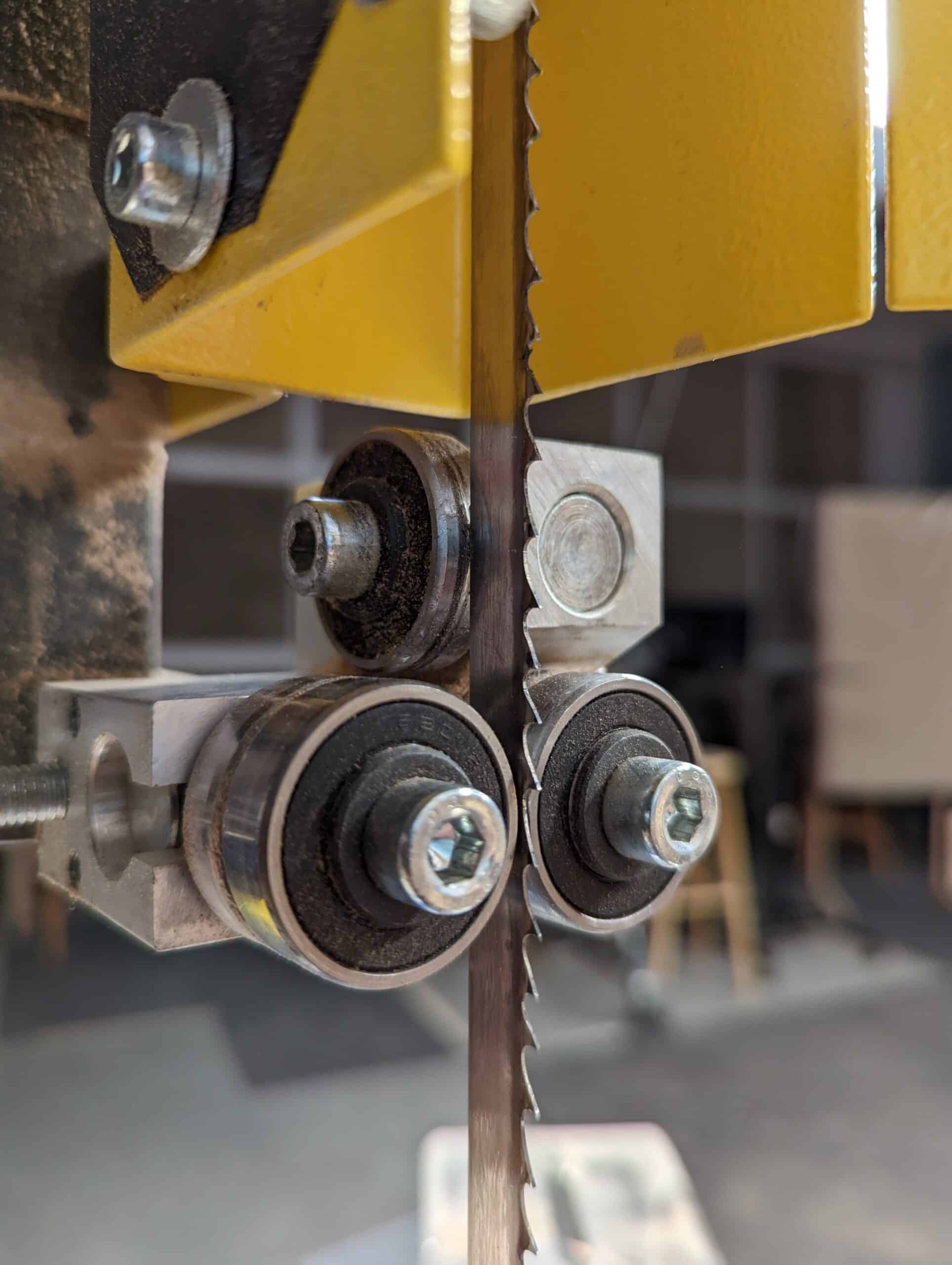A band saw belt should be tight enough to provide adequate tension on the drive pulleys but not so tight that it causes damage. To find the correct tension, start by turning the tensioning bolt or screws a few turns at a time until you can feel some resistance when pushing down on the back of the blade. It should move slightly under pressure and then return to its original position.
The belt should have just enough slack to allow for slight movement without feeling loose or sloppy. If there is too much slack, it can cause problems with accuracy and vibration while cutting. Once you’ve achieved the right amount of tension, secure each screw or bolt firmly in place.
When adjusting the belt on your band saw, it’s important to make sure that it is tight enough to prevent slipping but not too tight so as not to damage any components. To ensure a proper fit, you should be able to press down on the belt with two fingers and have approximately one-eighth of an inch of slack. If the belt is too loose, just tighten it until you reach this desired tension level.

Credit: paulsellers.com
How Tight Should a Belt Be for a Bandsaw?
When deciding how tight to make your belt on a bandsaw, you should ensure that it is not too loose or too tight. The correct tension will depend on the size and type of bandsaw you have as well as what type of material you are cutting. Generally speaking, the belt should be snug enough so that it does not slip when in use.
If the belt slips during operation, then it needs to be tightened further until slipping no longer occurs. Additionally, too much tension can cause stress to your motor and bearings which could lead to premature failure if left unchecked for an extended period of time.
How Do You Know If a Bandsaw Blade is Tight Enough?
To check if your bandsaw blade is tight enough, you should first make sure that the tension lever on the saw is in the “tight” position. Next, hold the blade between your fingers and pull up gently. If it moves more than a few millimeters or feels loose, then it needs to be tightened further.
You can also try tugging at various points along the length of the blade – if any part of it feels looser than other sections, then tightening may be required. Finally, checking for visible gaps between where the teeth meet with each revolution will ensure that there are not excessive spaces present which could indicate an overly-loose blade.
What is the Rule of Thumb for V Belt Tension?
The rule of thumb for V belt tension is that the belts should be tight enough to prevent slipping, but not so tight as to cause damage or excessive wear. To determine the correct amount of tension, it is best to use a belt tension gauge and follow manufacturer’s guidelines.
The general range of acceptable tension falls between 75-110 lbs., depending on the size and type of belt being used. Additionally, proper alignment and pulley size are also important factors in maintaining optimal V belt performance.
How Much Slack Should a Fan Belt Have?
When it comes to a fan belt, there should be no more than 1/2 inch of slack. If the fan belt is too loose, it won’t provide enough tension and can cause the engine to overheat or wear out prematurely. Too much tension can also cause premature wear on components such as bearings or pulleys in addition to making the engine run hotter.
To ensure that your fan belt has adequate tension but not too much, always check for proper slack before starting your vehicle.
How To Tension Your Bandsaw Blade Correctly – WOOD magazine
Bandsaw Blade Tension Formula
The proper tension of a bandsaw blade is essential for safe and effective cutting. The correct tension can be determined by using a formula that takes into consideration the thickness, width, and size of the blade. This formula helps to ensure that the blade has enough tension to cut through material without slipping or breaking.
The following equation should be used when calculating the amount of tension needed: Tension (lbs.) = (Blade Width x Blade Thickness) / 2 + 15 lbs.
Bandsaw Blade Tension Calculator
A bandsaw blade tension calculator is an invaluable tool for anyone using a bandsaw. It helps to ensure that the blade is adequately tensioned, which can lead to smoother cuts and longer-lasting blades. With this type of calculator, you simply input the length and width of your saw’s table and then select the thickness of your saw’s blade.
The results will tell you how much tension should be applied in order to properly cut through materials without causing damage or wear on the blade.
Ryobi Band Saw Blade Tension
Ryobi band saw blades operate best when the blade tension is properly adjusted. To adjust the tension, first turn off your power switch and loosen the knob on top of the frame to release any existing tension. Then, slowly increase tension by turning the knob until you feel a slight resistance from the blade before tightening it back up again.
Doing this will ensure that your Ryobi band saw operates at its optimal level and provides clean, accurate cuts every time.
Bandsaw Blade Tension Psi
There are many factors that go into choosing the right bandsaw blade tension. Generally, it is recommended to use a tension between 90 and 120 psi (pounds per square inch). This range offers optimal performance for most cutting applications while still allowing the blade to be flexible enough to make tight turns without breaking or buckling.
It’s important to note, however, that some blades may require higher tensions depending on their thickness and material type being cut. Additionally, a lower tension should be used when making curved cuts in order to reduce stress on the blade.
Conclusion
In conclusion, it is important to understand the correct tension for a band saw belt to ensure proper functioning of the device. Too much tension can cause premature wear on the belt and other components, while too little tension will result in slippage and poor performance.
By taking time to check your band saw’s manual guidelines or consulting an expert on the matter, you can ensure that your machine is running at optimal levels with just the right amount of belt tension.
Table of Contents

